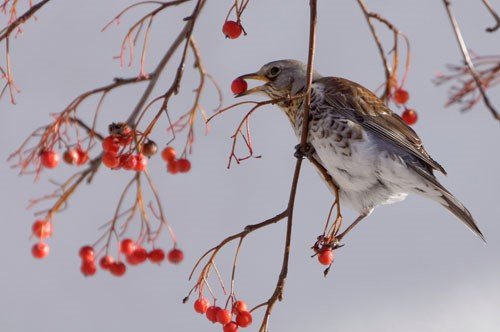
What Birds are in the Garden in February
Share
During February you will see the garden birds that have survived winter foraging continuously in search of food. The fittest of these survivors may also start to flaunt courtship displays.
The second month of the year brings long, freezing nights and unreliable winter days, which makes natural food scarce.
Bird species such as thrushes and finches have spent the last few months surviving mainly on autumn’s natural flush of fruits and berries. But as winter unfolds, supplies of nuts, seeds, and berries deteriorate. This is why bird feeding truly is a necessity at this time of year.
Even when food is tough to find birds won’t meekly surrender, many will seek out new food supplies further afield. Late winter sees many birds moving from district to district and finding their way into our gardens.
The months of February and March also bring visitors - redwings and fieldfares are amongst the grandest we might see. These winter thrushes are bird nomads that may turn up overnight looking for berries.
The Siskin is another visitor that may find its way to your garden in February in search of peanuts or black sunflowers as it’s adept to feeding from hanging bird feeders.

The siskin is easy to spot. It’s often confused with a Greenfinch; it is in fact a finch; however, it more closely resembles the shape of a Blue tit. Both birds are dumpy, acrobatic and tiny however the siskin has a sharply forked tail. Try feeding our Goldfinch and Siskin Mix to attract this beautiful tiny bird to your garden. We've improved the diet further and have introduced dried sesame seed to provide useful calcium which can be lacking in birds' diets.

Surviving is one thing of course, but the breeding season is another which brings a whole new set of challenges. The competition will be on, with only the fittest making it through to spring and having a successful breeding season when, hopefully, they will bring their young family to your garden.
Written by Angela and Chris
